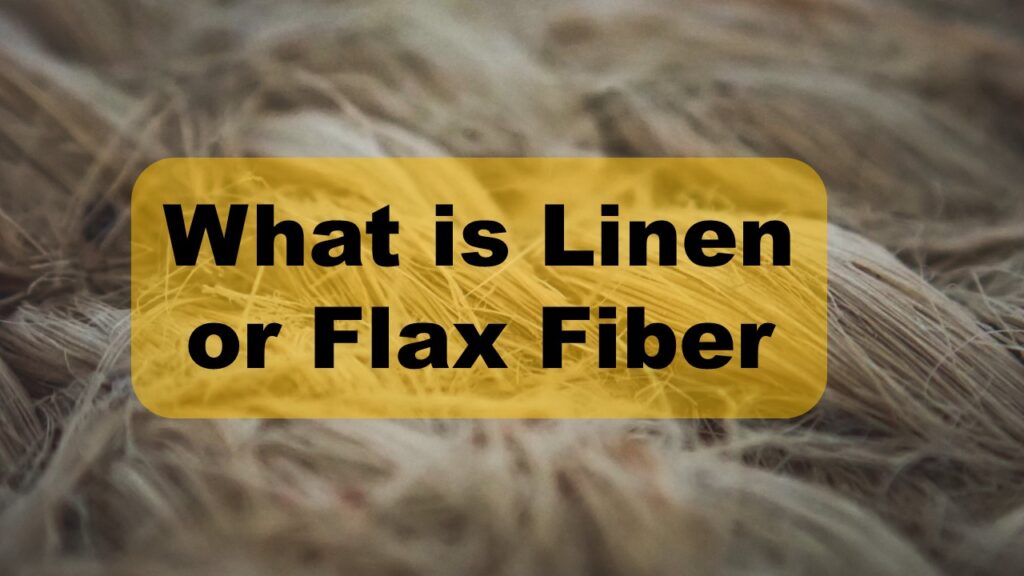
What is linen or flax fiber complete details with its history and relation with human.
Indeed, linen fiber is a natural fiber obtained from the flax plant, scientifically known as Linum usitatissimum. It’s one of the oldest textiles in the world, valued for its strength, breathability, and versatility. The fibers used for linen originate from the stems of the flax plant. Through a process called retting, the outer stalk of the plant decomposes, unveiling the long, robust fibers within. Afterward, these fibers are spun into yarns and then woven into fabric.
Linen is known for its exceptional properties. It’s highly absorbent, wicks moisture away from the body, and dries quickly, making it a popular choice for clothing in warm climates. Additionally, linen is durable and gets softer and more comfortable with each wash. Its natural luster and texture give it a distinctive, slightly rustic appearance that many people appreciate.
The history of linen fiber dates back thousands of years. Humans have been using linen for various purposes, including clothing, household items, and even in ancient rituals. Here’s a brief overview
- Ancient Origins: Linen’s production dates back to ancient civilizations, including Egypt, where it held significant value as a highly prized fabric. The ancient Egyptians used linen for clothing, burial shrouds, and as a symbol of purity and wealth. Yes, mummies were frequently wrapped in linen because it was believed to embody purity and possess exceptional durability.
- Medieval and Renaissance Period: Linen continued to be a staple fabric in Europe during the medieval and Renaissance periods. It was widely used for clothing, especially among the wealthier classes. Its popularity was due to its breathability and comfort in warm weather.
- Industrial Revolution: The production of linen saw significant changes during the Industrial Revolution. Mechanical inventions facilitated the processing of flax plants and the spinning of linen fibers, making production more efficient and widespread.
- Modern Times: Linen remained a popular fabric, especially for summer wear, due to its lightweight and moisture-wicking properties. Household items such as tablecloths, bedding, towels, and curtains also make use of linen.
Linen has earned its value throughout history due to its durability, comfort, and versatility. While its popularity fluctuated with changes in fashion and textile innovations, it has remained a valuable fabric in many cultures across the globe.
FAQ About Linen/Flax Fiber
Here are some frequently asked questions (FAQs) about linen, which is derived from flax fiber:
What is linen/flax fiber?
Linen is a natural fiber made from the stems of the flax plant (Linum usitatissimum). Flax fibers are harvested from the plant’s stalks and processed to create linen fabric known for its strength, breathability, and natural luster.
What are the characteristics of linen/flax fiber?
- Strength: Linen is one of the strongest natural fibers, known for its durability.
- Breathability: It has excellent breathability, making it comfortable in warm weather.
- Absorbency: Linen can absorb moisture and dry quickly, making it suitable for clothing.
- Natural Luster: Linen has a natural shine and becomes softer and more lustrous with each wash.
What are the common uses of linen/flax fiber?
- Clothing: Linen is used in various clothing items such as shirts, dresses, trousers, skirts, and suits.
- Home Textiles: It’s used in bedding, towels, tablecloths, curtains, and upholstery due to its durability and aesthetic appeal.
- Industrial Applications: Linen is used in industrial applications like canvas, thread, and paper production.
How is linen/flax fiber produced?
To produce linen, flax plants are harvested, and their stems are soaked in water to allow the fibers to separate from the woody parts. The fibers are then spun into yarns and woven or knitted into fabric.
What are the advantages of linen/flax fiber?
- Durability: Linen is exceptionally durable and can last for many years.
- Thermoregulation: It keeps the body cool in hot weather and provides insulation in cooler temperatures.
- Antibacterial Properties: Linen has natural antibacterial properties and is resistant to mildew and moths.
Is linen/flax fiber eco-friendly?
Yes, linen is considered eco-friendly due to its natural and biodegradable properties. Flax plants require minimal water and pesticides compared to other crops, making linen a sustainable choice.
How should linen/flax garments be cared for?
Linen garments are usually machine washable, but it’s recommended to follow the care instructions provided on the garment’s label for specific washing and drying guidelines to maintain their quality and prevent excessive wrinkling.
Can linen/flax fiber be blended with other fibers?
Yes, linen can be blended with other fibers like cotton, silk, or wool to combine their properties and create different textures or improve durability.
Why does linen wrinkle easily?
Linen fibers have a natural structure that contributes to their propensity to wrinkle. However, this characteristic is part of the fabric’s charm and is often embraced as part of the natural look and feel of linen garments.
These FAQs provide an understanding of linen/flax fiber, its characteristics, production process, uses, and eco-friendliness, showcasing its significance in the textile industry and everyday applications.
Any one interested in selling or buying for this item please contact us.